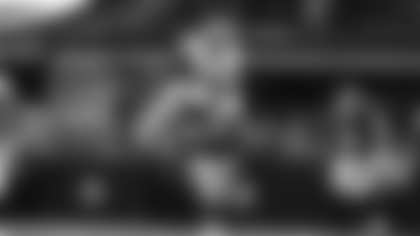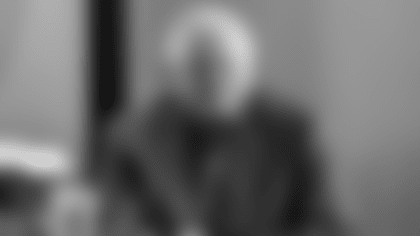If the Cowboys are going to advance into the final week of the regular season with a 9-6 record, they'll need to find a way to control the Saints' prolific offense and exploit their porous defense. Limiting Drew Brees' impact in particular is an enormously difficult task no matter how you slice it, but understanding some of the Saints' tendencies can help.
Going Deep
As we saw last week on a bomb to Mike Wallace, the Cowboys, a team that has done an outstanding job of limiting big plays, are still susceptible to the deep ball. Drew Brees & Co. will test the Cowboys' secondary on Sunday; Brees is fifth in the NFL in deep pass attempts in 2012, but first in completions, yards and touchdowns. Lance Moore, Devery Henderson, Joe Morgan and even Marques Colston have all shared downfield looks; amazingly, all four receivers have between 14 and 19 targets of at least 20 yards.
Second-to-None
Earlier this week, I mentioned that the Saints have passed the ball on 74.0 percent of their second-down plays in 2012, well above the 58.0 percent league average. One reason for that is due to the Saints' balance on first down, when they actually rush the ball 51.8 percent of the time.
When Drew Brees does drop back to pass on first down, it's typically to a wide receiver; three Saints players have more first-down receptions than tight end Jimmy Graham. On second down, however, Graham leads New Orleans with 32 receptions and running back Darren Sproles checks in at No. 2 with 29 grabs.
Such numbers suggest that the Saints like to run the ball on first down to give Brees two attempts at moving the chains through the air in medium-yardage situations. If the offense can run the ball for five yards on first down, they seem content to let Brees find his backs and tight ends on intermediate routes or his wide receivers downfield to obtain a new set of downs. With a 67.7 percent completion rate on second down, why not?
One of the most unique aspects of the Saints' play-calling comes on second-and-1. Whereas most teams are extremely risk-averse on second down, passing the ball only 32.9 percent of the time, the Saints realize the upside second-and-1 can bring. New Orleans has passed the ball 70.0 percent of the time on second-and-1, and it's no surprise that Brees' passer rating in such situations is 108.9. It might seem trivial, but knowing the Saints' tendencies on a crucial down-and-distance could help Dallas limit the opportunities for big plays downfield. On a league-wide basis, NFL quarterbacks have a collective 106.9 passer rating on 166 attempts on second-and-1 this year.
Abandoning the Run
It's difficult for the Saints to take the ball out of Drew Brees' hands; with his talent and the weapons the Saints have on the outside, it's no wonder they pass so often. Opposing defenses know that, however, and play the Saints far differently than they'd play a team like the San Francisco 49ers. That's a major reason the Saints are above-average in terms of rushing efficiency.
One of the situations in which the Saints could potentially benefit from running more often is on third down. Perhaps the most unbelievable stat surrounding the Saints play-calling in 2012 is that they've passed the ball 159 times on third down, but run it on only 17 plays. That's a 90.3 percent pass rate when the league average on third down is 78.6 percent. Taking away a few third-down runs that came late in games when the Saints had the lead and were simply killing clock, New Orleans hasn't run the ball a single time on third-and-three or greater. Not once. Check out their pass rates in various third-down situations (excluding the final three minutes of games):
- Third-and-1: 46.2 percent (league-average: 29.2 percent)
- Third-and-2: 78.6 percent (league-average: 66.3 percent)
- Third-and-3 or more: 100 percent (league-average: 89.4 percent)
In normal game situations, the Cowboys can immediately drop into coverage on third downs with three or more yards to go; the Saints won't run the ball.
Location, Location, Location
The Dallas offensive tackles will each be matched up almost exclusively with one player on Sunday. Saints defensive ends Cameron Jordan and Will Smith both play over 90 percent of their snaps in the same position – Jordan on the left side of New Orleans' defense and Smith on the right.
Meanwhile, the Saints don't really interchange their safeties in the same way as Dallas. Malcolm Jenkins rarely plays near the line-of-scrimmage – 41 safeties have lined up within 8 yards of the line more often than Jenkins – while Roman Harper will be positioned in the box often. Thus, it could be easier for quarterback Tony Romo to read coverages and deliver the football before Saints defenders can reach him.













